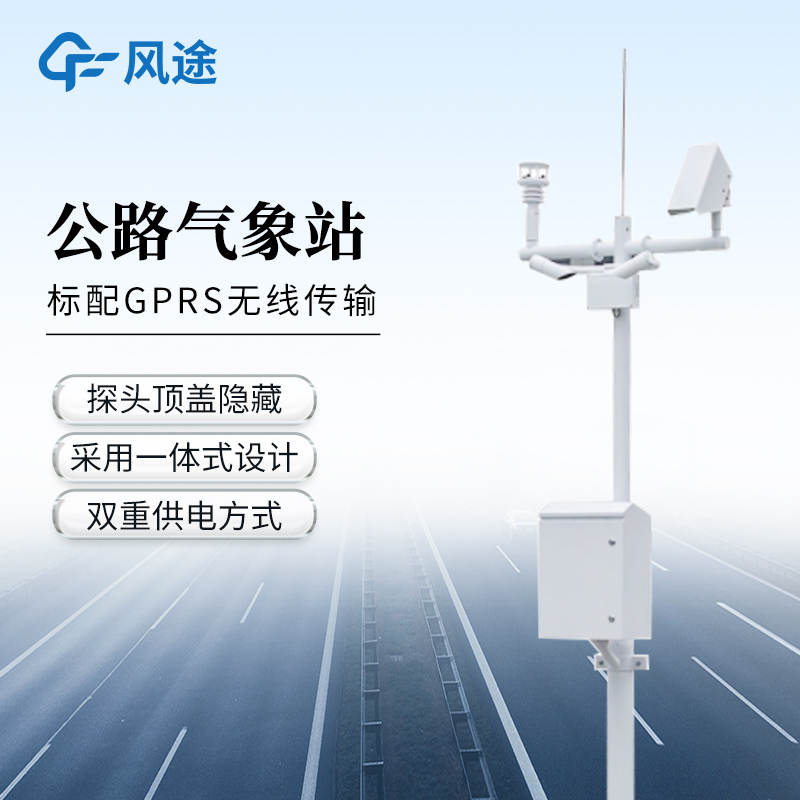Shandong Fengtu IOT Technology Co., Ltd
Sales Manager:Ms. Emily Wang
Cel,Whatsapp,Wechat:+86 15898932201
Email:info@fengtutec.com
Add:No. 155 Optoelectronic Industry Accelerator, Gaoxin District, Weifang, Shandong, China

Sales Manager:Ms. Emily Wang
Cel,Whatsapp,Wechat:+86 15898932201
Email:info@fengtutec.com
Add:No. 155 Optoelectronic Industry Accelerator, Gaoxin District, Weifang, Shandong, China
time:2025-08-14 09:30:59 source:Weather Station viewed:115 time
Intelligent transportation utilizes new-generation information technologies such as the Internet of Things and cloud computing, along with theoretical tools like transportation science and artificial intelligence, aiming to achieve comprehensive perception and scientific decision-making. By building a dynamic information service system, it analyzes traffic data to optimize resource allocation, improves the level of decision-making, management and service, promotes the safe and efficient development of transportation, and helps with industrial transformation and upgrading.
Road Weather Station is the foundation for the realization of intelligent transportation. It monitors and predicts the actual weather conditions along railways or highways, provides traffic meteorological data of various locations for relevant departments, and facilitates them to make appropriate decisions.
Road Weather Station integrates various meteorological sensors from structure to system composition by using technologies such as automatic collection, intelligent perception and wireless communication. It can continuously collect meteorological information along traffic routes, obtain various meteorological elements such as CO₂, air pressure, rainfall, wind speed, wind direction, illumination, air temperature and humidity, soil temperature and humidity, PM2.5/PM10, etc. It conducts real-time monitoring, remote transmission and aggregation of these elements, providing original data for traffic meteorological guarantee services along each route. Based on these data, it can provide timely meteorological information services for highway authorities and travelers.
The components of Road Weather Station mainly include the following:
Collection system, which is responsible for monitoring various meteorological elements. This system has a variety of sensor types, mainly including air temperature and humidity sensors, tipping bucket rain gauges, soil temperature and humidity sensors, air pressure sensors, rain and snow sensors, wind speed/wind direction sensors, illumination sensors, PM2.5/PM10 sensors and other equipment, which can be flexibly selected and matched according to actual needs.
Bracket, which is used to place sensors, electric plates, control boxes and other hardware, generally with a height of 2 meters.
Power supply system, 220V mains electricity or solar panels can be used as power supply. In low-power operation, it can ensure the meteorological station to work continuously for 7-10 days.
Control box, which contains the host computer, is mainly used to collect the meteorological elements monitored by the sensors. After collection, the collector will transmit these meteorological elements to the cloud platform.

Traditional weather stations are often large, fixed facilities established within standardized observation fields. They provide highly accurate data but come with high construction costs, long implementation cycles, and fixed locations. However, for field scientific expeditions, on-site rescue durin...
The Portable Weather Station with Screen (FT-PQX7) of the Seven-Element model can measure in real-time the wind speed (ranging from 0 to 70m/s), wind direction (0 to 360°), temperature (-40℃ to 80℃), humidity (0 - 100% RH), air pressure (300 - 1100hpa), illumination (0 - 157286LUX), and optical r...
Traditional fixed visibility monitoring equipment is limited by factors such as installation location and power supply conditions, making it difficult to meet flexible and variable monitoring needs. The emergence of the Portable Visibility Detector has effectively solved this problem.Low visibility...
The Visibility and Present Weather Sensor is an automatically continuous monitoring sensor, whose main monitoring targets include visibility, precipitation conditions, and specific types of visibility-impairing weather phenomena.This device works based on the forward scattering principle. It activel...